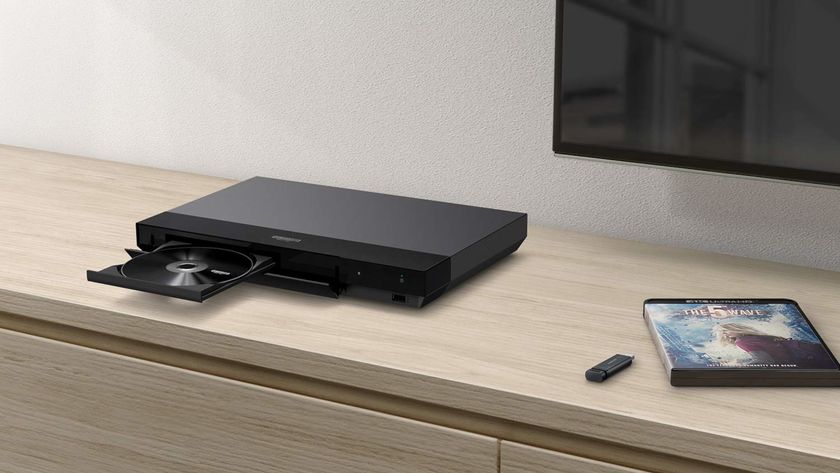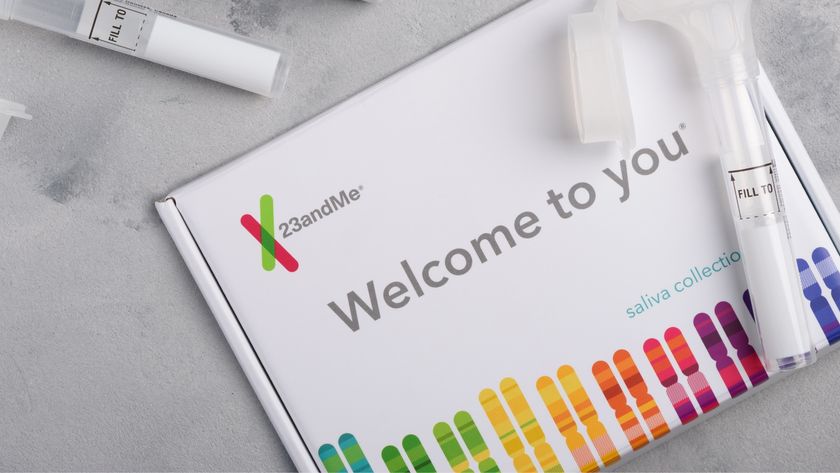Sharp Claims New TVs Achieve Resolution Between HD and 4K
By reconfiguring the component colors in each pixel, the TV can boost resolution to something closer to 4K, says TV maker.

TV maker Sharp, which already has a line of garden-variety 4K/Ultra HD TVs, claims it has found a trick to convert its regular 1080p HDTVs into something closer to 4K resolution. It's featuring the technology on its new Aquos Quattron+, or Q+, lines of LED LCD TVs.
The new models go on sale in the spring starting at $1,700 for a 60-inch model, which would be quite cheap for a real 4K TV.
The way Sharp does the HD-to-4K trick might sound like fuzzy math, but here's the logic. It's based on the fact that a pixel, often called the smallest component of a picture, isn't really the smallest part. That would be the subpixels — even smaller red, green and blue (RGB) components that mix at varying levels of brightness to create any color on the screen.
MORE: 5 Easy Tips for Buying an HDTV
Sharp has a fourth subpixel, a yellow (Y) one that the company says gives the screen a better range of colors. This extra subpixel is one of the keys to the HD-4K conversion, which changes the way that the subpixels work together when the TVs try to display 4K TV content.
Splitting pixels — and hairs?
First, Sharp says that each subpixel actually has two parts, an upper and lower, so to switch from HD to 4K-ish, it can "split" them, controlling the brightness of each half separately. That doubles vertical resolution from 1080 to 2160 lines (1080p to 2160p), getting the screen halfway to 4K.
The horizontal part is trickier. Sharp reconfigures how the subpixels work together. Instead of seeing each pixel as having four colors (RGBY), the TV's software essentially sees just the individual green and yellow components as their own, virtual pixels. Sharp chose these colors, a representative told us, because they are the ones that the human eye is most sensitive to, and they easily overpower the other colors. That would double the number of pixels across the screen, but how does Sharp get a picture that isn't just green and yellow vertical stripes?
Sign up to get the BEST of Tom's Guide direct to your inbox.
Get instant access to breaking news, the hottest reviews, great deals and helpful tips.

These green and yellow virtual pixels "share" the rows of red and blue subpixels between them, mixing their light to tweak colors. The TV's image processor can "balance" as Sharp calls it, the mixture of the green and yellow pixels with the red and blue. The more subtle and nuanced the colors — especially certain colors —on the screen are, the higher the resolution appears.
Greens and yellows look best
To explain how that works, Jon Fairhurst, who has the title "manager of consumer electronics standards" at Sharp, gave the example of an all-red screen.
"We can't generate any additional detail. We've only got the red subpixels," Fairhurst told Tom's Guide. "We turn off all the other colors."
The TV screen generates the most detail, not surprisingly, with images that are largely green, yellow or some combination of the two colors, such as a leaf or a sunflower petal. In such cases, the pure-green and pure-yellow subpixels can play off those shared red and blue subpixels to create subtler shades of green and yellow. So don't be surprised to see lots of foliage displayed on the screens of Quattron+ TVs in advertisements.
Does the trick work?
We took a look at the Quattron+ TVs at Sharp's press conference during the CES electronics show this week. At the very least, they were good-looking 1080p HD screens. In some cases, when Sharp was feeding the TVs the right 4K content, we saw a bit more detail — not quite 4K, but that's not what Sharp says it is promising.
"We're not marketing this as ultra HD," Fairhurst said. "We're marketing it as a full HD TV that can accept Ultra HD [4K] signals."
One upshot of Sharp's technology is that it handles 1080p HD natively, that is, pixel-for-pixel. Real 4K TVs have to analyze the video and "interpolate" (make up) extra detail to fill in the extra pixels, which has varying success rates.
So Sharp's new TVs should be at their best when showing HD video, which is everywhere now. They can also fudge something approaching 4K for the small (though fast-growing) trove of content out there — and for a lot less than a real 4K TV.
Follow Sean Captain @seancaptain and on Google+. Follow us @tomsguide, on Facebook and on Google+.
Marshall Honorof (@marshallhonorof) contributed to this article.
Sean Captain is a freelance technology and science writer, editor and photographer. At Tom's Guide, he has reviewed cameras, including most of Sony's Alpha A6000-series mirrorless cameras, as well as other photography-related content. He has also written for Fast Company, The New York Times, The Wall Street Journal, and Wired.
















